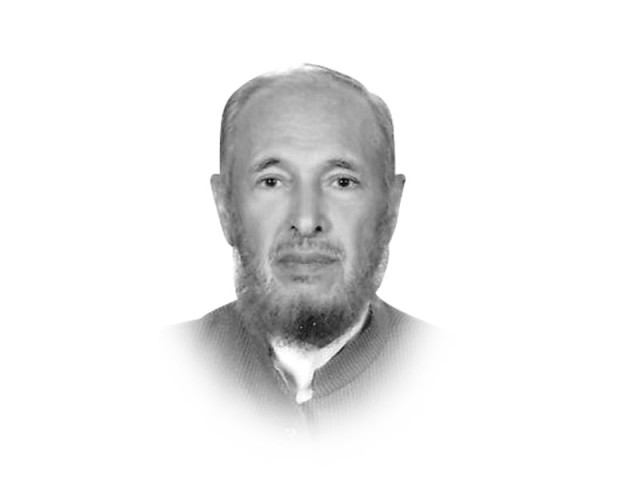A stalled normalisation process
The subcontinent needs statesmen who have vision, credentials & courage to go past the legacy of unnecessary conflict.

The writer has served as ambassador to Afghanistan and chief secretary of Khyber-Pakhtunkhwa. He is a nominee of the Government of Pakistan in talks with the TTP.
What then drives the anti-normalisation mindset and why is this concept the dominant narrative in both countries, in opposition to the widespread yearning for relations to improve? Why are the lobbies of the pro-status quo so powerful as to hold the two countries hostage to the slogan of perpetual hostility and an endless and utterly meaningless confrontation?
Because the pro-status quo group — miniscule in comparison with 1.4 billion people that form roughly one-fifth of humanity — control the media, the power that counts on both sides of the divide. In addition, the vested interests are so deeply entrenched in the corridors of power that no policy would ever be made or executed to their exclusion. This lobby feeds on such paranoid fears as “Pakistan is a mortal enemy of India” and “India wants to undo Pakistan”, etc.
When it was suggested by some that the two countries may choose to stick to their positions on Kashmir — the most intractable of all disputes hampering the process of normalisation between the two countries — and go forward on other fronts like liberalisation of visa, trade, cultural exchanges, resolving issues like Sir Creek, Siachen and water-sharing that could, in the course of time, release a new dynamic which could facilitate the resolution of the issue of Kashmir, these voices were suppressed and termed ‘compromisers of national interests’.
The example of India and China — both have unresolved issues of territory, as well as water-sharing — having a mutual trade upwards of $65 billion was not accepted. Likewise, Thailand and Malaysia have unresolved border issues but the volume of trade amounts to about $23 billion.
It will be a stupendous exercise to attempt to quantify the magnitude of the losses suffered by the two countries since 1965 because of lost opportunities in commerce, trading and investment, and the cost of military expenditure that was predicated upon the existence of ‘mortal danger’ faced by each country .
Scores of studies have been carried out, documenting the benefits that would accrue to both countries as a consequence of trade liberalisation, even though the balance of trade would be mostly in favour of India. But besides the direct benefits resulting from free flow of trade, the effect on the whole spectrum of relations of the removal of barriers would be huge. It will set the ball rolling for an unstoppable and sustainable expansion of relations in all conceivable sectors. Most importantly, it would bind and bring together communities and people so that the ownership of the policy of normalisation would pass on to the masses. When that happens no one, howsoever strong and resourceful, would be able to impede a historic process of bringing sanity to relations between the two former colonies of the British empire — countries which share a common heritage, culture, languages, faith and history .
Confronted with such an enormous and daunting challenge, the subcontinent needs statesmen who would have the vision, credentials and more importantly, the courage to go past the bitter legacy of an unnecessary conflict that has consumed resources and has resulted in three debilitating wars between the now nuclear-armed neighbours for most of the period since 1947, when India was partitioned on the eve of independence. On the political landscape, however, there do not appear to be any such politicians who would lead from the front and radically transform the prevailing narrative of deep suspicions into one of understanding, of projecting into the future, of demonstrating flexibility for long-term gains, for peace and prosperity. Judged in this perspective, Mian Nawaz Sharif’s resolve to promote better relations with India offers hope and promise amidst the gloom that has overtaken the peoples of the two countries. All eyes are now on the impending Indian election. If a leader of stature and vision emerges in Delhi who could give a new orientation and direction to India’s relations with Pakistan and put it on a new trajectory, a favourable environment could be created to address the many small and bigger issues that have strained relations between the two neighbours for over six decades. In the likely event of Narendra Modi becoming the prime minister leading a coalition cabinet, this dream, perhaps, would remain unfulfilled . But who knows? It was a BJP leader who came to Minar-e-Pakistan to lay the foundation of a new relationship based on recognition of each other’s sovereignty and vital national interests. Had General (retd) Pervez Musharraf not sabotaged that process by launching a destructive war in 1999, the subcontinent today would have looked so different. Fifteen years of peace would have changed the face of South Asia .
Published in The Express Tribune, February 23rd, 2014.
Like Opinion & Editorial on Facebook, follow @ETOpEd on Twitter to receive all updates on all our daily pieces.













COMMENTS
Comments are moderated and generally will be posted if they are on-topic and not abusive.
For more information, please see our Comments FAQ